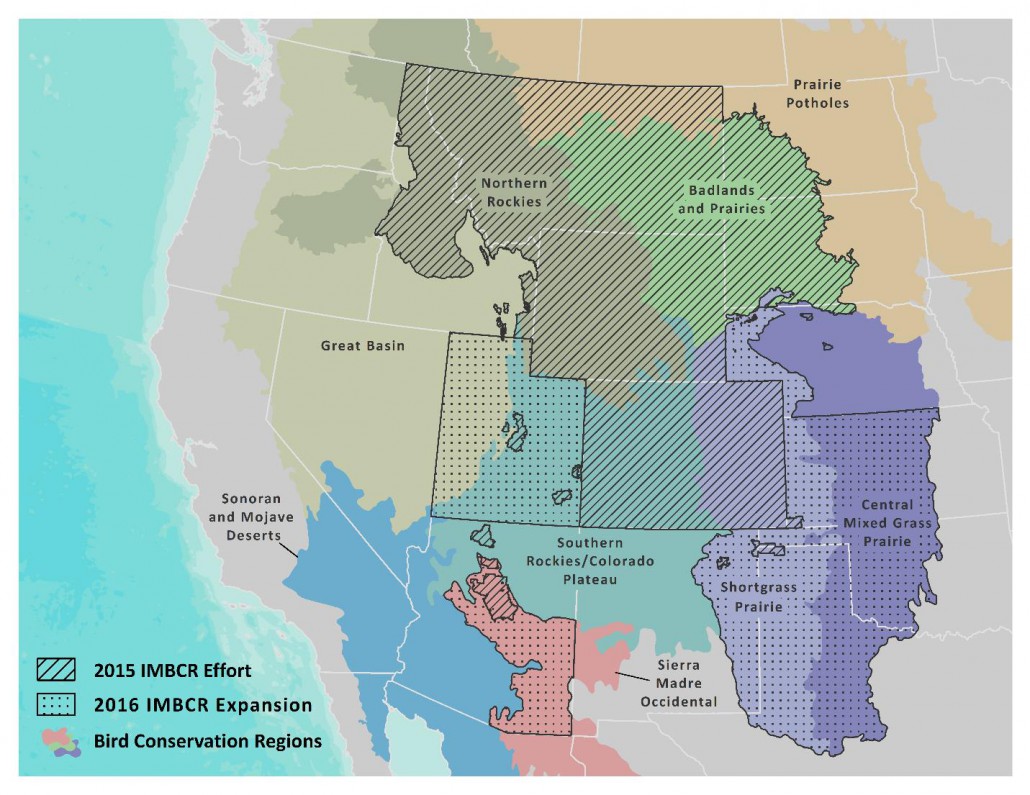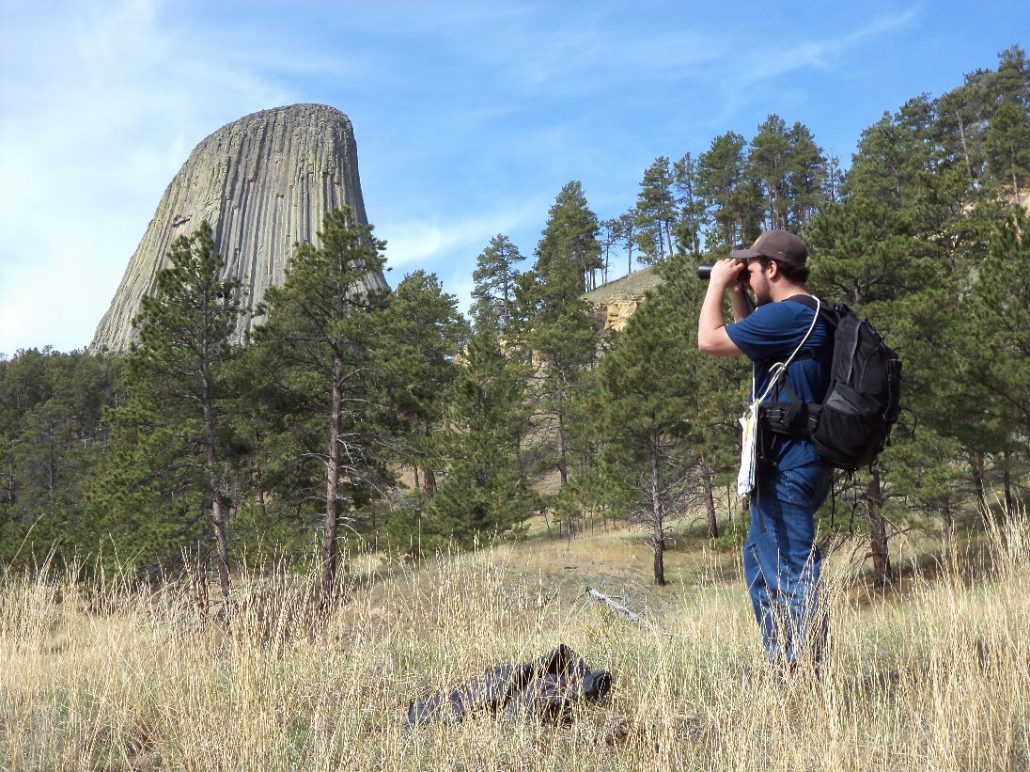
Jake Hourt conducts an IMBCR point count in the shadow of Devil’s Tower in 2014. Photo by Nick Van Lanen.
Bird Conservancy of the Rockies Biologists as well as Wyoming Natural Diversity Database (WYNDD) and Intermountain Bird Observatory (IBO) staff are once again preparing for a monumental season of data collection under the Integrated Monitoring in Bird Conservation Regions (IMBCR) program! 2016 will mark the largest sampling effort yet for the ever-growing program. This year, the monitoring effort will continue throughout all of the areas that were sampled in 2015 (Figure 1) and will expand into the Bird Conservation Region 9 (Great Basin) portion of Utah which represents roughly the western third of the state, into the grasslands of Arizona, and throughout almost the entire geographic extent of the Playa Lakes Joint Venture region.
Although this growth doesn’t mean the program will extend into any new states, it does mean that technicians will be counting birds in some different regions. For instance, 2016 will mark the first year where technicians will prowl the southwestern portion of Utah, the heart of Kansas and Oklahoma, and lower elevations in Arizona. This, of course, means new bird communities to be explored and recorded. We look forward to increasing the number of Crissal Thrasher, Scissor-tailed Flycatcher, and Painted Bunting detections!

Figure 2. Density estimates for Lark Bunting in Bird Conservation Region 17 (red) and for the state of Colorado (green). 90% confidence intervals are represented by the dashes above and below the estimates. Estimates were taken from the Rocky Mountain Avian Data Center.
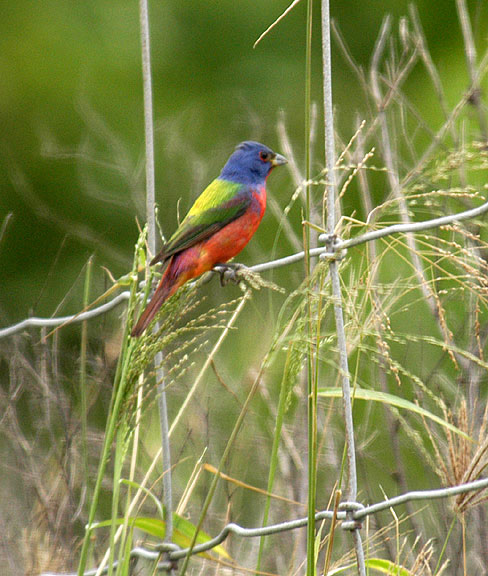
Painted Bunting is one of the species we hope to monitor now that we’re expanding our monitoring efforts in Kansas, Oklahoma, New Mexico, and Texas! Photo by Bill Schmoker.
Expanding the geographic extent of the IMBCR programs is only made possible by growing the IMBCR partnership. We’re pleased to work towards conserving birds alongside new IMBCR partners including the Playa Lakes Joint Venture, Utah Division of Wildlife Resources, Utah Bureau of Land Management, and the Arizona Game and Fish Department. The resources these agencies and organizations have brought to the table have allowed for a projected 2016 effort in excess of 1900 surveys across the landscape. That is up from about 1200 surveys in 2015. Visiting more than 1900 survey locations requires the hard work and dedication of more than 60 field technicians across 6 organizations (Intermountain Bird Observatory, Wyoming Natural Diversity Database, US Fish and Wildlife Service, Department of Defense, Utah Division of Wildlife Resources, and the Bird Conservancy).
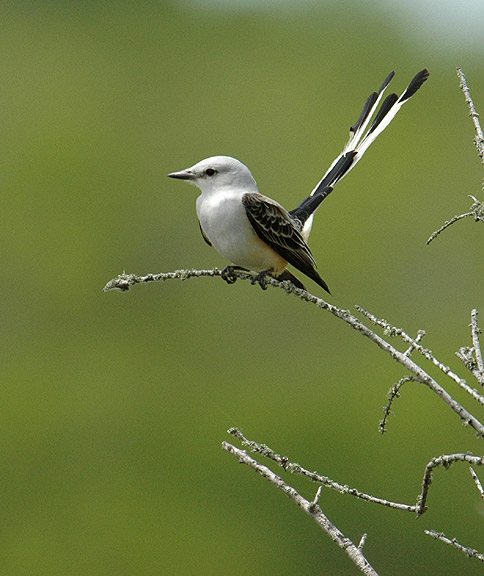
Our technicians are looking forward to counting Scissor-tailed Flycatchers in the southeastern portion of the IMBCR extent. Photo by Bill Schmoker.
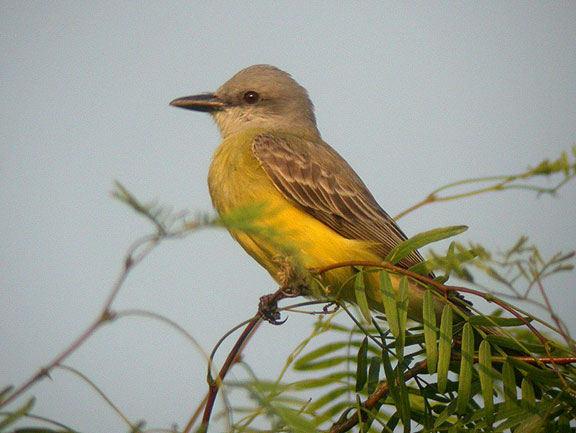
Tropical Kingbirds breed in the Arizona grasslands where IMBCR technicians will be surveying for the very first time. Photo by Bill Schmoker.
The large IMBCR partnership and huge sampling effort provides many benefits to bird conservation efforts. Because Bird Conservancy staff pool data across the entire IMBCR program during analyses, we are able to track more bird species than a stand-along monitoring effort could. Additionally, we are able to produce better density and occupancy estimates than a smaller effort would be able to. Lastly, the huge geographic extent of the program helps us understand how birds are doing at large spatial scales. This can be critically important for some of the more nomadic grassland species that tend to “follow the rain” each summer; one year breeding in Montana and the next breeding in Colorado. Figure 2 illustrates how important the large scale population estimates are. You can see that even the statewide Colorado estimates are so volatile compared to estimates across all of Bird Conservation Region 17!
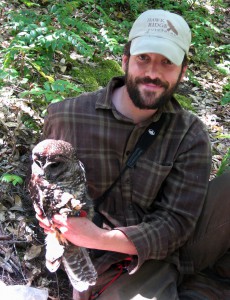 Nick Van Lanen, Biologist, Science
Nick Van Lanen, Biologist, Science
A Wisconsin native, Nick graduated from the University of Wisconsin-Madison in 2002 with a bachelor’s in wildlife ecology. Since 2001 he has studied birds in eight states investigating a range of topics including breeding, stop-over, migratory and wintering behavior of songbirds, raptors and gamebirds. Nick spent 18 months as an interpretive naturalist on the Georgia coast and realized research around bird conservation was his true passion. He returned to school and in 2010 received a master’s degree from Colorado State University for his research investigating the potential competitive interaction between Northern Spotted and Barred Owls. After graduate school Nick immediately joined Bird Conservancy as the Wyoming field crew leader.


